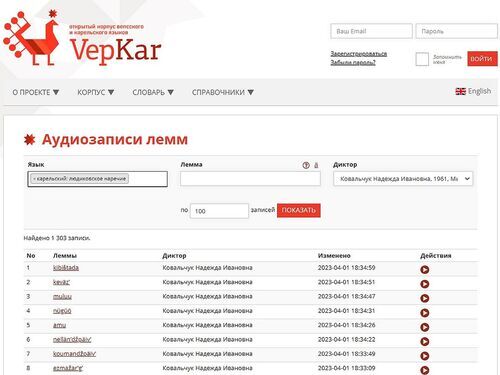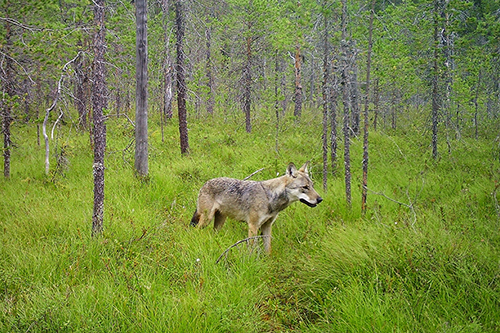Mikhailovsky dialect is one of the three in the Ludic supradialect of Karelian, which some researchers even classify as a language in its own right. In Russian linguistics, however, Ludic is treated as one of the three major supradialects of Karelian. Besides Mikhailovsky dialect, which is spoken in the south of the republic, in the Olonets District, there are also the Kondopozhsky and Svyatozersky dialects.

Fragment of a page of the VepKar portal
The spoken corpus of Balto-Finnic languages of Karelia is an open-access collection of sounded texts in different dialects of Karelian and Veps, marked up and translated into Russian. It’ll form an important part of the VepKar portal produced previously by specialists from ILLH KarRC RAS and the Institute of Applied Mathematical Research (IAMR) KarRC RAS. It comprises over 4 thousands text in 47 dialects. However, textual data alone do not suffice for adequate phonetic research.
– The basis for the audio dictionary is the «Contrastive onomasiological dictionary of dialects of the Karelian, Veps, and Sami languages». It includes more than 1400 concepts in 24 genetically interrelated Karelian, 6 Veps and 5 Sami dialects. Materials of the dialect dictionary for 30 Karelian and Veps dialects have already been included into "VepKar", - said Alexandra Rodionova.
The project participants - operator of the ILLH KarRC RAS Audio Record Archive Fyodor Gerasimov and Leading Research Engineer at IAMP KarRC RAS Natalya Krizhanovskaya - have developed a module for voicing dictionary entries, which facilitates interaction with informants during expeditions. A native speaker can record, listen to, and re-record a word conveniently.
The nearest plan is to supplement the audio dictionary with recordings of words in the dialects spoken in the villages of Yurkostrov and Svyatozero.
Photo by Fyodor Gerasimov / ILLH KarRC RAS





